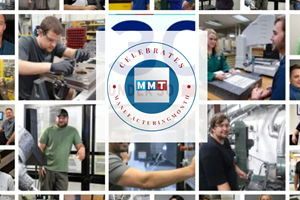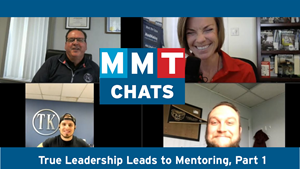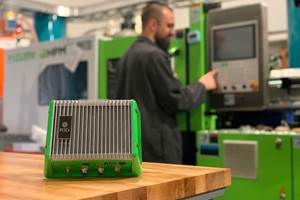Filling the Employment Gap With Women
As we enter the 21st century, the Bureau of Labor Statistics reports that the science, engineering and technology fields will grow at such an alarming rate that by the year 2008 there will be 5.3 million newly created jobs in these fields.
As we enter the 21st century, the Bureau of Labor Statistics reports that the science, engineering and technology fields will grow at such an alarming rate that by the year 2008 there will be 5.3 million newly created jobs in these fields. Where will corporations find the skilled, high-tech workers to fill the newly created positions?
One solution, according to the Congressional Commission's report on the Advancement of Women and Minorities in Science, Engineering and Technology, is to fill the high-tech positions with women, under-represented minorities and persons with disabilities. While 70 percent of the CEOs interviewed agreed to the skills shortage, the Commission's report makes national policy recommendations to address the serious nature of under representation of women and minorities. To grow the American talent pool we must educate, train and recruit these people. One West Michigan business taking an active role in educating women in the plastics industry is HS Die & Engineering, Inc.
From its headquarters in Grand Rapids, MI, HS Die & Engineering specializes in building plastic injection molds, die-cast dies and aluminum and magnesium dies. The business was founded by Harold Steele some 30 years ago and has grown into an $85 million company and one of the top plastic mold building companies in the United States. As an automotive supplier, Team HS Die & Engineering interacts on numerous levels with females in the plastics industry. Kent Hansen, engineering director for HS Die, recently led a seminar for women in the plastics industry on basic mold construction. This seminar focused on mold building, mold components and mold manufacturing processes. Also in the driver's seat for the seminar was Linda Stanko, cost optimization product development manufacturing/finance for Ford Motor Company.
Hanson and Stanko believe that their seminars provide an uninhibited atmosphere where women are encouraged to ask questions and gain a better understanding of injection molds, definitions of terminology used in the industry and how to better equip themselves in tooling related jobs. Women participating in the seminars have such jobs as purchasing and cost estimating of tooling, plastic part design and manufacturing management, and are project managers and tooling and process engineers. According to Hanson and Stanko, what is discovered at the seminars is that women can ask questions and get the straightforward answers they need to get their jobs done.
An example is basic mold theory. You have a part and it requires a mold to form it. The mold is required to transfer material from the press to the mold cavity, harden the material and eject the part from the mold. As simple as that may seem, there are many requirements to make this happen. Many molds will require some type of action to form features in a part, such as mechanical and hydraulically actuated slides, lifters and core pulls. Understanding the time involved and the process that it takes to make the proper actions happen in a mold can lead to financial savings for a company. After classroom training is complete, demonstrations and examples of classroom learning are reviewed during the tour of the moldmaking facility. No question is left unanswered.
What HS Die and Engineering has done is forge a collaborative relationship with automotive player Ford Motor Company to become true partners in the plastic moldmaking business. And that means sharing the risks and rewards of doing business together. Their partnership is successful and sharing that with other women in the industry is important to both of them for the growth of their business and women in the plastics industry.
We are in a world of vanishing boundaries as walls begin to fade away between engineering disciplines, between product design and manufacturing and between those individuals that work within those disciplines. At the heart of it all, knowledgeable, skilled employees provide the true competitive edge. Finding these skilled people, however, is a worldwide problem. Since manufacturing is not going to go away - because we will always need products - it is to a company's advantage to utilize all of its human resources. Adapt quickly and fully leverage all of your company's intellectual property and knowledge assets. That is the future - that is the real competitive advantage.
Related Content
30 Under 30: The New Face of Moldmaking
Young professionals are vital to the moldmaking industry, and it is important to acknowledge those making strides in shaping the industry's future. MoldMaking Technology recognizes the industry's young talent through its inaugural 30-Under-30 Honors Program.
Read MoreMaking Quick and Easy Kaizen Work for Your Shop
Within each person is unlimited creative potential to improve shop operations.
Read MoreICYMI: MMT Chats: True Leadership Leads to Mentoring, Part 1
This trio from TK Mold and Engineering in Romeo, Michigan, joins me to discuss the role of leadership and culture in mentorship. This episode is brought to you by ISCAR with New Ideas for Machining Intelligently.
Read MoreFree Injection Molding Training, Hands-On Demonstrations
Visit RJG’s booth at the K Show to watch training segments from its trainers worldwide, receive hands-on demos of the CoPilot system and view the power of The Hub networking system.
Read MoreRead Next
Are You a Moldmaker Considering 3D Printing? Consider the 3D Printing Workshop at NPE2024
Presentations will cover 3D printing for mold tooling, material innovation, product development, bridge production and full-scale, high-volume additive manufacturing.
Read MoreHow to Use Continuing Education to Remain Competitive in Moldmaking
Continued training helps moldmakers make tooling decisions and properly use the latest cutting tool to efficiently machine high-quality molds.
Read More_970x90 3.png;maxWidth=970;quality=90)












.jpg;maxWidth=300;quality=90)










_970x250 3.png;maxWidth=970;quality=90)